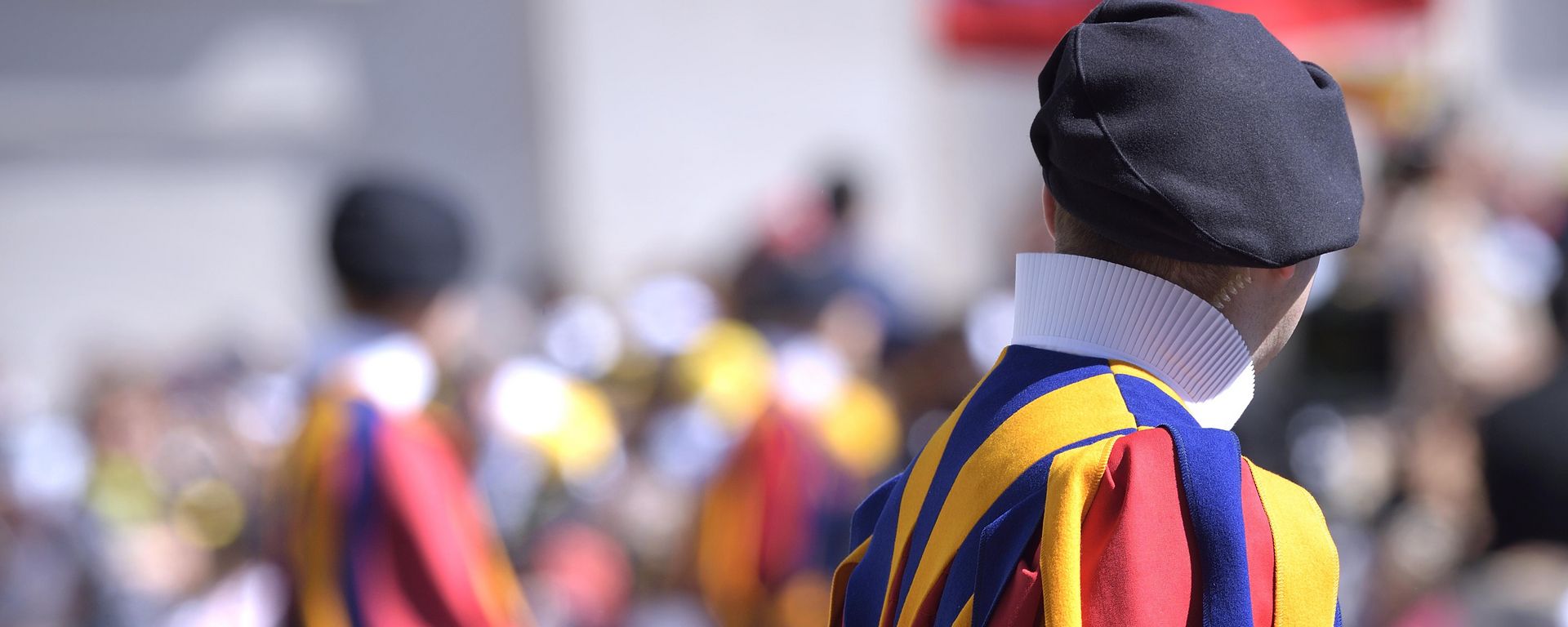Funding areas
The Pontifical Swiss Guard does not have sufficient funds to pay for all of the materials and equipment it needs. The Foundation has therefore decided to provide targeted support for the following aspects that affect the Guard:
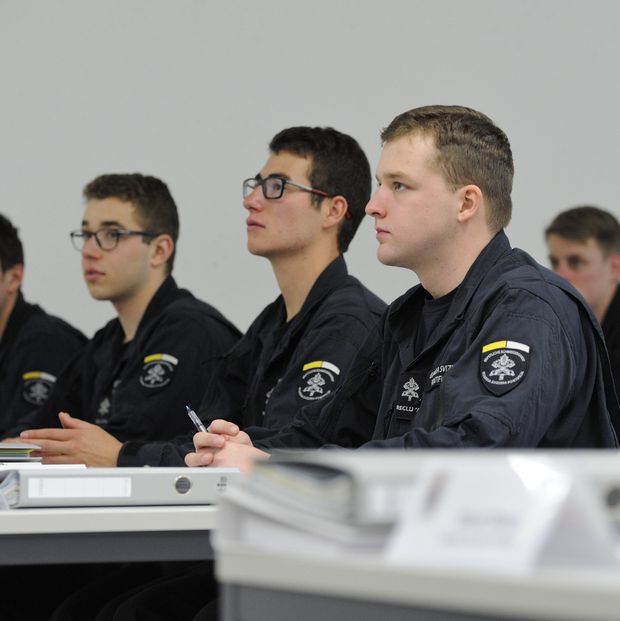
Education and training
In order to diligently fulfil the demanding tasks in providing the security service for the Holy Father, the guards have to regularly take part in both internal and external training courses. The guards also have the option of training to become Security Guards with a Federal Diploma of Higher Education (VSSU).
In addition to education and training in the security sector, foreign languages and information technology are also supported. The acquired professional skills not only help the guards to carry out their daily duties, but also make it easier for them to reintegrate into professional life following their service.

Support for families and children
The term of service in the Swiss Guard is limited in duration. This poses financial challenges that should not be underestimated for longer serving guards, non-commissioned officers and officers, particularly for those members of the Guard that are married. The continuity of disability and retirement plans also needs to be ensured for the whole family, even after they return home. Children should be educated in line with Swiss standards by attending the Swiss School in Rome. A transfer to the Swiss education system should be possible at any level. Insurance premiums, lessons at the Swiss school and extracurricular activities generate high costs for the Guard families.
It is important to the Foundation to help relieve the pressure on the families' household budgets by means of an appropriate contribution.
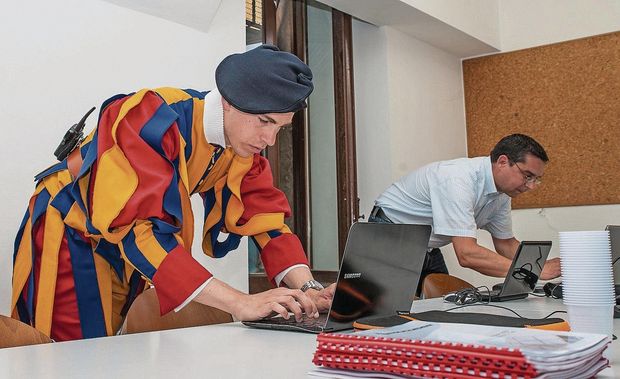
Contributions to the professional reintegration of former members of the Guard in Switzerland
The Guard Command sets great store in the members of the Guard making their (voluntary) contributions to the Swiss OASI during their service in Rome. This will prevent them from having large gaps in their contributions after returning to Switzerland, which would result in massive reductions in their retirement pensions. With this in mind, the Foundation makes contributions to finance the employer's OASI contribution. Further contributions are financed to improve the senior officer pension plan and other reintegration measures.
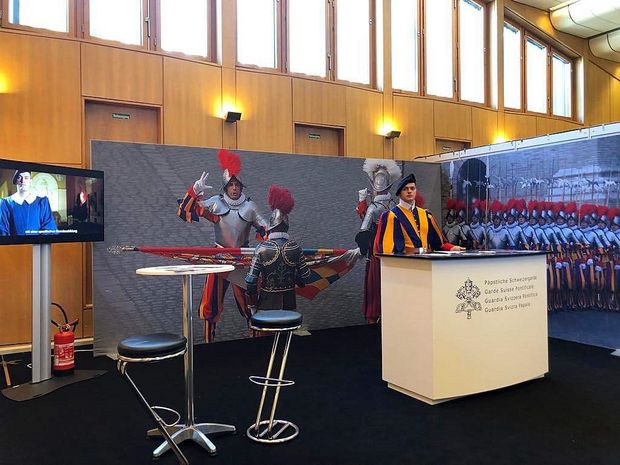
Support of recruitment and PR work
To ensure that the Pontifical Swiss Guard can carry out its duties professionally and in full, it requires 135 guards. For halberdiers, the guard service lasts at least 26 months. A large number of the guards then leave the Guard service again. This means approximately one-third of the total number of guards – i.e. some 45 halberdiers – have to be replaced every year.
Recruiting a sufficiently large number of guards proves to be a huge challenge every year. The Foundation supports the Guard Command in creating and providing advertising materials, attending job fairs and providing funding to hold the “Taster Week” for prospective guards.
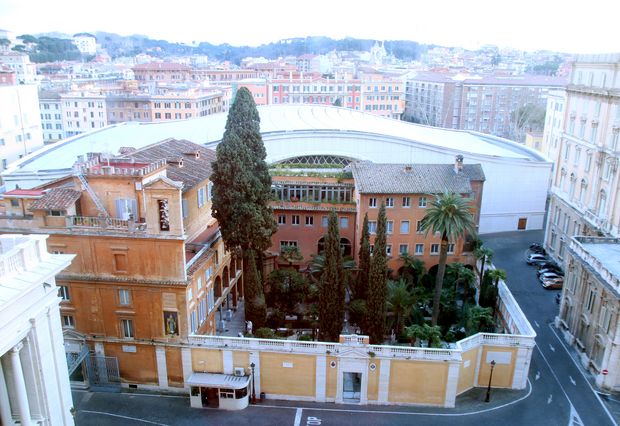
Renovation of the Swiss Chapel (Santa Maria della Pietà, Campo Santo Teutonico)
A document dated 16 May 1520 testifies that the Pontifical Swiss Guard were granted rights of use to the front left side chapel of the Church of Santa Maria della Pietà at Campo Santo Teutonico. The prayer room is thus considered to be the first chapel for the guards and was used as a place of worship as well as a burial ground. In the bare church interior of S. Maria della Pietà, the Swiss Chapel with its wall paintings is considered to be a building of great historical value and a jewel worthy of preservation. However, the stonework and plastering as well as the furnishings are showing considerable damage caused by humidity. With the renovation of the chapel, the Swiss Guard hopes to contribute to the preservation of cultural property that is important to the corps.
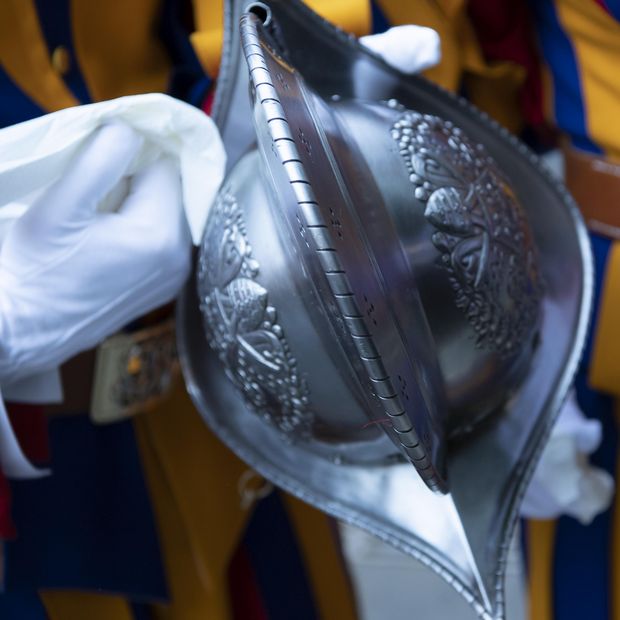
Infrastructure and equipment
In addition to the everyday headgear, the beret and the black helmet (now produced via a 3D printing process), the Pontifical Swiss Guard wears a magnificent helmet of polished steel, the so-called morion, on important public holidays. To ensure that the Guard can be provided with the right equipment at all times, 25 new helmets need to be purchased.
These replica helmets need to be forged by hand and in line with traditional, old craftsmanship. This ensures that the helmet bowl with the high crest made from a single steel plate is moulded into the right shape. The coat of arms of Julius II is not embossed with a punch and die, but instead is driven into the metal by hand. Every helmet is thus unique. New armour will also have to be purchased with the increase in the number of guards.
